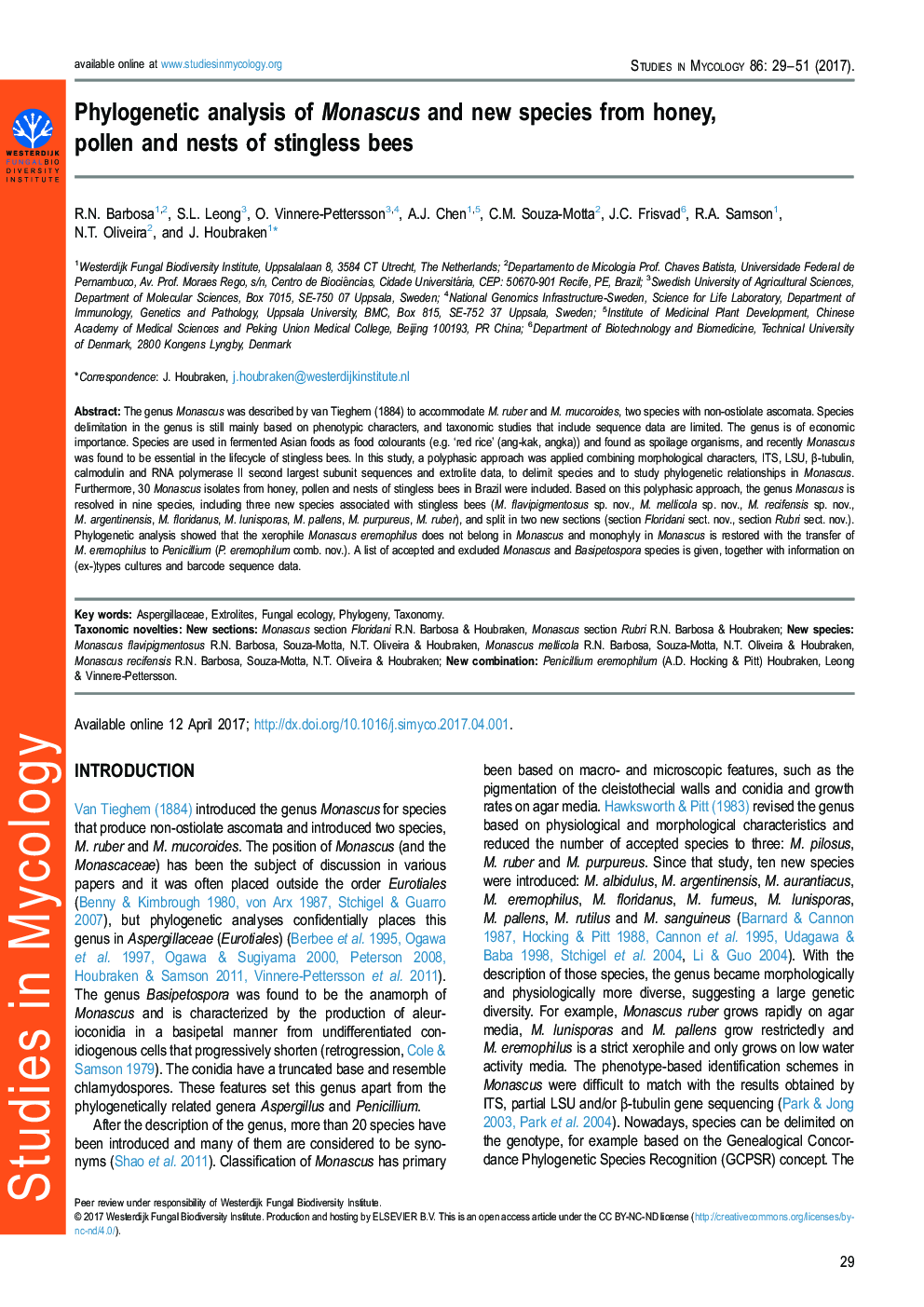| Article ID | Journal | Published Year | Pages | File Type |
|---|---|---|---|---|
| 5740980 | Studies in Mycology | 2017 | 23 Pages |
The genus Monascus was described by van Tieghem (1884) to accommodate M. ruber and M. mucoroides, two species with non-ostiolate ascomata. Species delimitation in the genus is still mainly based on phenotypic characters, and taxonomic studies that include sequence data are limited. The genus is of economic importance. Species are used in fermented Asian foods as food colourants (e.g. 'red rice' (ang-kak, angka)) and found as spoilage organisms, and recently Monascus was found to be essential in the lifecycle of stingless bees. In this study, a polyphasic approach was applied combining morphological characters, ITS, LSU, β-tubulin, calmodulin and RNA polymerase II second largest subunit sequences and extrolite data, to delimit species and to study phylogenetic relationships in Monascus. Furthermore, 30 Monascus isolates from honey, pollen and nests of stingless bees in Brazil were included. Based on this polyphasic approach, the genus Monascus is resolved in nine species, including three new species associated with stingless bees (M. flavipigmentosus sp. nov., M. mellicola sp. nov., M. recifensis sp. nov., M. argentinensis, M. floridanus, M. lunisporas, M. pallens, M. purpureus, M. ruber), and split in two new sections (section Floridani sect. nov., section Rubri sect. nov.). Phylogenetic analysis showed that the xerophile Monascus eremophilus does not belong in Monascus and monophyly in Monascus is restored with the transfer of M. eremophilus to Penicillium (P. eremophilum comb. nov.). A list of accepted and excluded Monascus and Basipetospora species is given, together with information on (ex-)types cultures and barcode sequence data.
